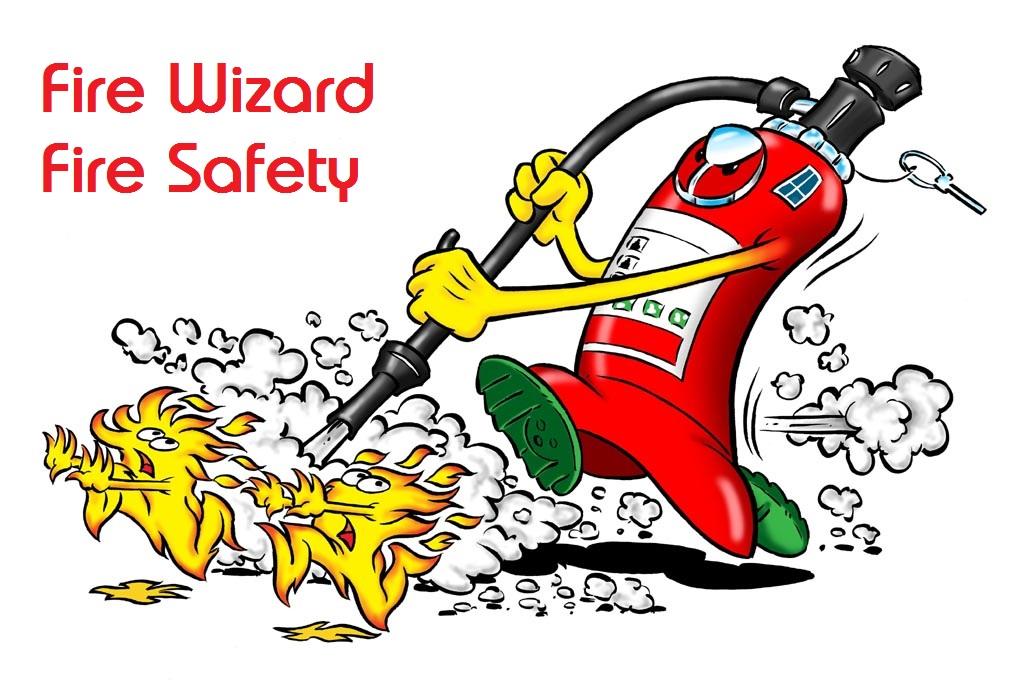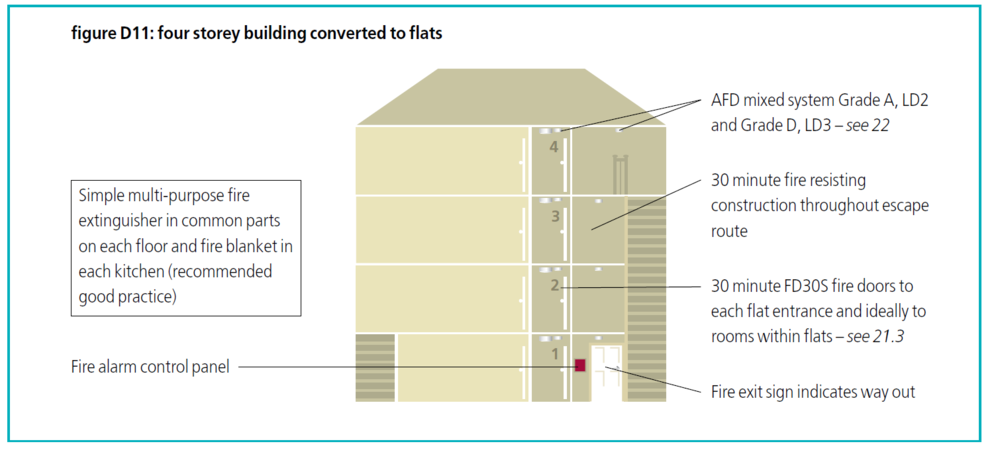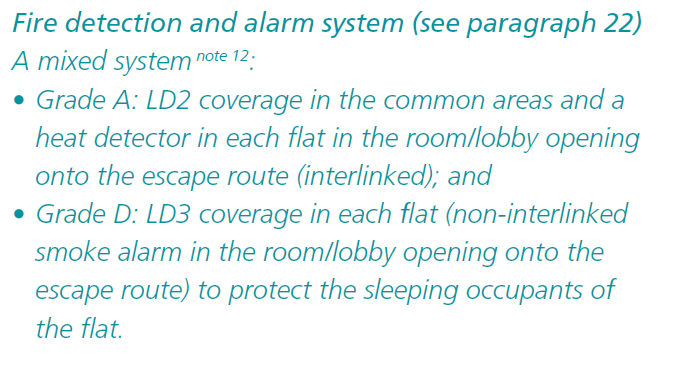-
Posts
2,707 -
Joined
-
Last visited
Everything posted by AnthonyB
-
Guidance says the minimum width of an escape route should not be less than 750mm (unless it is for use by less than five people in part of your premises) and, where wheelchair users are likely to use it, not less than 900mm. So in theory from an obstruction point of view managed risk may be possible, fire risk from flammability of items is another factor to consider.
-
The permanent label is the important thing, the tied labels are primarily for initial retail display purposes and are expected to be removed by the purchaser so you should be OK
- 17 replies
-
To remove the need for the commercial units fire alarm system to be linked to sounders in the flats above there should be adequate fire seperation between the different Purpose Groups, usually 60 minutes fire resistance. If the refurb was to a degree that would be classed as 'Building Work' it would be subject to building regulations and there should be a Health & Safety File containing fire safety information that would answer your questions. Your part of the building appears to have no areas covered by the Fire Safety Order (but the Housing Act does apply) so the obligations are solely on the commercial unit's Responsible Person to ensure your safety - as whilst you are not in premises covered by the Fire Safety Order anyone in your apartment would be a 'relevant person' who could be affected by a fire in the commercial unit so they still have to account for them. There are plenty of passive fire protection companies that could look at the compartmentation as well as specialist Fire Engineering Consultancies that could help too.
-

Fire doors, areas of special fire risk and corridor lengths
AnthonyB replied to helenfs71's topic in Fire Exits
Both BB100 & Building Regs are for designing new builds and not always fully applicable to existing builds. Earlier schools will have followed the many editions over the years of BB7 and the risk assessment guide for existing schools is here https://assets.publishing.service.gov.uk/government/uploads/system/uploads/attachment_data/file/14887/fsra-educational-premises.pdf -
There are loads out there: https://fire-surveys.com/ https://pyramid-online.net/index.php?d=1&d=1&refr=128 http://fireriskassessmentapp.co.uk/home/fra
-
Try these for advice - they are specialists in the field of making items like yours safe for general use https://www.flameprotectuk.com/
-
Building Regulations only apply to new builds, the DCLG guides replicate the approach used to good effect for over half a century and so as not to penalise existing buildings. The current approach offers enhanced safety, but the old approach still provides a reasonable level of safety in most situations.
-
Heats are a no no for escape routes as by the time they activate the area wouldn't support life. If you need a common system, the common parts have to have smokes. As a very small block by the sounds of it you may be able to retain the existing kit, without looking I can't be sure.
-
The premises should have call points first before detection - domestic smoke alarms are normally not suitable for commercial premises (unless of course you are talking about a HMO where in smaller ones they are OK) Not all Grade D smoke alarm systems can have call points added so knowing what exactly you've got would help. A proper fire detection & warning system to BS5839-1:2017 may be required if it's a commercial building.
-
Rough rule of thumb is one 13A rated extinguisher per 200 sq.m. (each extinguisher has a fire rating written on the front). British Standards (Guidance not law) cite a minimum of 2 A-rated extinguishers regardless of floor size, but that's overkill for the trades benefit and any competent risk assessor would be happy with just one if it's a particularly small office. As most environments have electrical equipment it's common practice to pair each fire point of water or foam with a CO2 Water Mist replaces the 2 separate extinguishers but not all extinguisher suppliers will stock these as they prefer the income from selling and maintaining (& replacing again every few years) twice as many extinguishers so you are best suited to order via Safelincs (don't forget to add Commissioning).
-
You will need a fire risk assessment and this will answer the questions - I'd need to see the site to give definitive advice.
-
It sounds like the vulnerability is where the pipes enter the roof void and this is the junction needing the most attention.
-
Yes, the door will have had it's integrity compromised unless installed with suitable passive fire protection products (e.g. https://envirograf.com/product/animal-door-flap/) and even then the door may loose it's cold smoke protection
-
Usually the communal system would have heat detectors and sounders in each flat to enable full evacuation, which is the purpose of the common system (if it had been purpose built flats it wouldn't need a common system unless it had smoke vents)
-
Has to be on the risk side (below). A full detection & alarm system to evacuate the HMO upon fire in the takeaway is a possible alternative
-
Kapok is quite nasty from a safety point of view: It is irritant: as the fibres are designed to disperse seeds on the wind, it is advisable to wear a dust mask when stuffing items with kapok, as the fibres fly in all directions and can irritate the lungs. It is flammable: the trapped air makes kapok highly flammable, and if it catches fire it is difficult to put the fire out. Special precautions are needed to transport kapok e.g. in the hull of ships. One advantage cited of this characteristic is that kapok can be used as tinder!
-
There seem to be a multitude of potential issues here and I suspect the premises do not have a suitable Fire Risk Assessment, which due to some of the uses is likely to need to be written. Guidance for this type of premises is here: https://assets.publishing.service.gov.uk/government/uploads/system/uploads/attachment_data/file/422195/9294_Small_Mediumt_v2.pdf It sounds like the stair may need to be a protected route meaning you can't have the storage unless you build an under stair cupboard of 30 minutes fire resistance. It also sounds like it needs an electrical fire detection & warning system to BS5839-1 (not just domestic detection)
-
This is what the general fire safety guidance says: "Electromechanical devices Electromechnical devices comprise electromechanical lock keeps and draw bolts, which can be controlled by people inside the premises by entering a code or by using ‘smart cards’, which have been adapted to control the exit from certain areas. These devices have been fitted in many premises and may be linked to the fire-detection and/or warning system. Experience has shown that these devices can fail to open in a number of ways. They are dependent on a spring mechanism to return the lock keep or draw bolt(s) and are liable to jam when pressure is applied to the door. It is also relatively easy to fit them incorrectly. Electromechanical locking devices are normally unacceptable on escape doors, unless they are fitted with a manual means of overriding the locking mechanism such as a push bar, push pad or lever handle or that they do not rely on a spring mechanism, fail-safe open and are not affected by pressure, in which case the criteria for electromagnetic devices should be applied." Not much help on maintaining fire integrity of the doorset! Have you asked the BWF or the Guild of Architectural Ironmongers - both provide useful guidance.
-
Recommendation technically. It would achieve the aim of getting everyone out but would make it difficult to correctly identify the area in alarm. It must be old to have a one zone panel, you could save on re-cabling by changing the devices and panel to addressable and program the zones, but there is no other short cut on conventional systems as if you changed the conventional panel to one with multiple zones whilst you could keep the devices you would have to change all the cabling to split into zones.
-
I very much doubt it, most extinguishers are sold overpriced as it's a niche market and they don't sell or are reduced. Water & chemical foam extinguishers will rot through eventually if full and vapourising liquids ones are hazardous (and illegal). Powders and CO2 are no harm left charged, but weight is an issue when you are filling a wall or shelf full of them! Halon 1211 extinguishers are worth more full because of it's rarity and are sort after for continued legal air use as well as illegal other uses (because they are damn good extinguishers!)
-
Dangerous game though with chemicals & wets generally as they will eventually pin hole (or worse if they pressurise) due to corrosion and then are worthless.
-
There is no extra value in being full, just risk. I empty all mine. External condition is the key to value. The tops come off anticlockwise, couple of taps on the lugs to loosen then slowly unscrew. You will see the cage and bottle at the top of the cylinder, gently lift it all out and you can pour out the contents.
-
For the vast majority of purpose built flats the official advice remains stay put unless affected by fire or smoke. There should be a fire risk assessment for the block which will advise on the required evacuation policy for your building, check with the communal areas management company.



